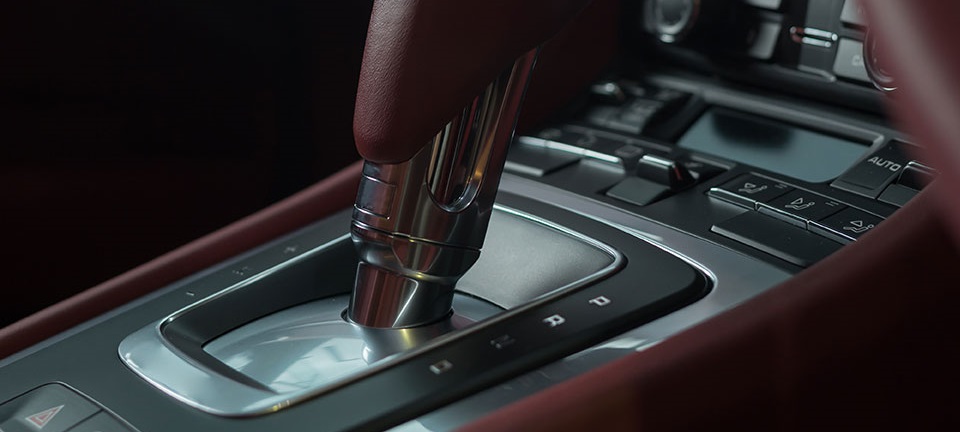CVT Transmission – Pros and Cons Guide 2022

What is CVT Transmission?
Many vehicles come fitted with a continuously variable transmission, also known as a CVT transmission. Compared to standard transmissions, CVT transmission works without any physical gears.
Instead, a belt and pulley system work together to simulate changing gears depending on power demands. One pulley connects to the engine and the other sends power to the wheels.
This can change ratios in response to acceleration, achieving any ratio to match your car. The result is a smoother ride with seamless driveability and efficient fuel performance.
CVT Transmission Pros
1. Better Efficiency & Responsiveness
Vehicles equipped with CVT maximise fuel economy. Today, almost all hybrids use this technology because of the high level of fuel efficiency offered. It’s widely found in Japanese cars such as Honda CRV’s, Subaru’s, Mitsubishi's and Toyota’s.
2. Seamless Acceleration
CVT transmission offers an infinite number of gear ratios for optimised performance. The infinite ratios help maintain a steady cruising speed which keeps your car’s engine in the peak power range, far beyond the ability of the conventional automatic transmission.
Seamless acceleration is achieved because the transmission is always in the right gear. It ensures the engine speed is optimised for the ideal level of power, enabling the car to speed faster in certain conditions.
The 2019 Toyota Collora Hatchback employs the latest twist on the technology with the ‘launch gear’. Similar to the first gear in standard transmissions, the launch gear handles the car’s acceleration up to 35km/h, then the CVT transmission switches over to the belt and pulley system.
3. Lighter Weight
Without gears to maintain the proper driving ratio, CVT transmissions are lighter and smaller than standard transmissions.
They take up less space underneath the car which reduces weight profile and makes a practical option for compact vehicles. A lower weight profile means your car won’t work as hard when you’re driving, minimising stress and premature wear-and-tear.
CVT Transmission Cons
1. Expensive to Purchase & Repair
Unmatched fuel economy and smoother responsiveness come at a price. Running expenses and upkeep is low as there are less moving parts.
However, repairs can be expensive and often require a complete replacement if they fail. Different types of CVT transmissions also come with their own range of unique problems. CVT transmissions also have different servicing requirements.
Special oil, transmission fluid and parts are required for repair and maintenance and should only be completed by a skilled car transmission specialist.
2. Change Your Driving Habits
If you’re considering purchasing a car equipped with a CVT transmission, always go for a test drive first.
Driving will feel different because the throttle response will seem delayed compared to other transmissions, especially if you are used to driving a vehicle with a standard transmission.
3. Opposite of Sporty
Continuously variable transmissions are designed to be practical with great fuel efficiency.
For drivers who want a car that is fun to drive around, the continuously variable transmission is incapable of handling high-torque applications which makes it hard to achieve that sporty feel.
CVT Gearbox Frequently Asked Questions
What Cars Have a CVT Transmission?
CVTs have been used in various vehicles for many years and are generally considered reliable transmissions. They are especially popular in hybrids and SUVs because they offer excellent fuel efficiency and smooth, uninterrupted power delivery.
How do CVT Transmissions Work?
A CVT transmission works using a belt and pulley system to constantly change the gear ratio. This is done by having the belt ride on two pulleys, an input pulley and a output pulley.
As the belt rides on the smaller pulley, it moves faster than the larger pulley, which gives you a higher gear ratio. As the belt rides on the larger pulley, it moves slower than the smaller pulley, which provides you with a lower gear ratio.
How Reliable are CVT Transmissions?
The continuously variable transmission is very reliable, and they usually last a long time. Many people believe that CVTs are more reliable than the typical automatic transmission, which is one reason why they are becoming increasingly popular.
Contact the CVT Transmission Experts!
For all continuously variable transmission questions, contact Automatic Transmissions R Us by calling us on (08) 9785 0221, emailing info@autotransrus.com.au, or submit a contact form!
